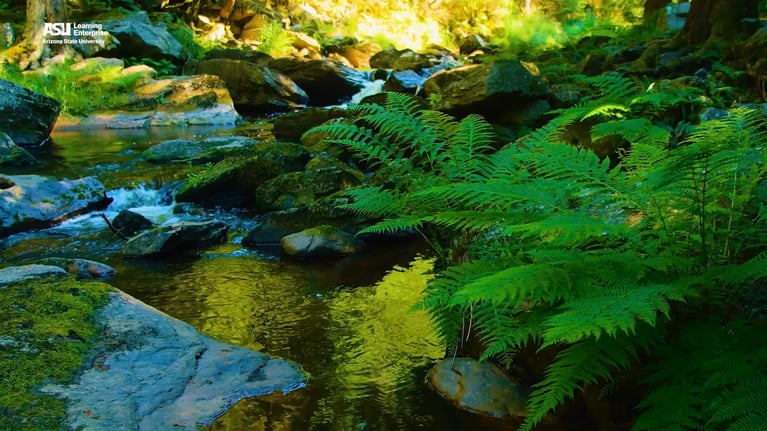Plants derive their mass from carbon through the process of photosynethesis, where they use light energy to combine carbon dioxide from the air and hydrogen from water to create carbohydrates like sugar, starch, and cellulose. Where do plants get their mass? While plants contain a significant amount of water, the majority of plant growth and mass is built using carbon from the air. This phenomenon is essential as it helps mitigate climate change by reducing the amount of carbon dioxide in the atmosphere.
The plants in your gardens, backyards, or at a park – where do you think they get their mass? All those branches and leaves must come from somewhere, but where?
It turns out that all that material is made from carbon. In fact, all living things are made from carbon, including you and me. We get our carbon from the food we eat, but what about plants? You might think it is from the soil, or maybe the water, but that is not the case. As fantastic as it may seem, plants get their carbon from thin air. Our air contains a combination of gases. One of those gases is carbon dioxide. And that is where plants get much of their mass. It’s part of the process of photosynthesis.
You’ve probably heard that word. Photosynthesis is how plants use light energy from the sun to combine hydrogen in water with carbon dioxide from the air to make carbohydrates – like sugar, starch, and cellulose. All of those compounds are what plants use to build their tissues. It is how a plant seed grows and makes all of its stems, leaves, and branches.
Now, most organisms also hold a lot of water, but this is especially true for plants. Their mass can be as much as 90% water. But the rest of the mass of most plants is built using that carbon from the air. So, you could say plants grow out of thin air.
But that is only part of the story. When a plant uses carbon dioxide from the air to make all its branches and leaves, it helps our climate. Too much carbon dioxide in the air can cause temperatures to increase. This makes our climate change, and not in a good way. When plants pull carbon dioxide out of the air and use it for all their stems, leaves, and branches they lock up some of that carbon, which reduces the amount that is in the air.
Now if you look around at the plants in your backyard and park, you are not only seeing Nature’s fantastic ability to take what seems like nothing - air - and turn it into plant parts. You are also seeing locked up carbon that is not in our atmosphere... and that is a very good thing. It is such a good thing that scientists, including those like Klaus Lackner at Arizona State University, are building mechanical trees that can also pull carbon out of the air to be safely stored away or recycled.


